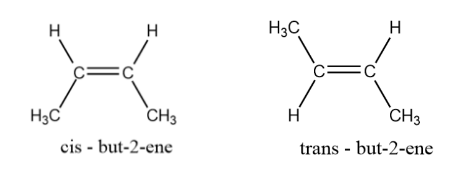Answer
37.2k+ views
Hint: A chiral carbon indicates the presence of optical activity around the central carbon. The mirror image of an optically active compound should not superimpose over the original image. So, if the same groups or atoms are attached the mirror image will not be unique.
Complete step-by-step answer:
The word “isomer” is derived from the Greek words "isos" and "mers". "Isos" means equal and "mers" means parts, so "isomers" means equal parts.
Isomerism is the phenomenon in which two or more compounds have the same chemical formula but differ in chemical structures. Chemical compounds that have identical chemical formulas but differ in properties and the arrangement of atoms in the molecule are called isomers i.e. they exhibit isomerism.
Isomerism is of two types namely, Structural isomerism and stereoisomerism.
In stereoisomerism, the compounds have the same chemical formula but differ in their respective orientations of the atoms belonging to the compound in a 3D space.
The types of stereoisomerism are:
- Geometrical
- Optical
Optical isomers are two compounds having the same molecular formula but differ in their spatial arrangements of atoms, which have non-superimposable mirror images.
Since the mirror images are not the same, the groups around the chiral carbon must be different in order to satisfy the above condition. So Chiral carbon is carbon in which all four valencies are satisfied with four different atoms or groups of atoms.
Therefore, the correct answer is option (A).
Note: Geometrical isomerism is popularly known as cis-trans isomerism.
Geometrical isomers have different spatial arrangements of atoms present in the compound in a 3D space. Given below is an example of pair of isomers exhibiting geometrical isomerism:

Complete step-by-step answer:
The word “isomer” is derived from the Greek words "isos" and "mers". "Isos" means equal and "mers" means parts, so "isomers" means equal parts.
Isomerism is the phenomenon in which two or more compounds have the same chemical formula but differ in chemical structures. Chemical compounds that have identical chemical formulas but differ in properties and the arrangement of atoms in the molecule are called isomers i.e. they exhibit isomerism.
Isomerism is of two types namely, Structural isomerism and stereoisomerism.
In stereoisomerism, the compounds have the same chemical formula but differ in their respective orientations of the atoms belonging to the compound in a 3D space.
The types of stereoisomerism are:
- Geometrical
- Optical
Optical isomers are two compounds having the same molecular formula but differ in their spatial arrangements of atoms, which have non-superimposable mirror images.
Since the mirror images are not the same, the groups around the chiral carbon must be different in order to satisfy the above condition. So Chiral carbon is carbon in which all four valencies are satisfied with four different atoms or groups of atoms.
Therefore, the correct answer is option (A).
Note: Geometrical isomerism is popularly known as cis-trans isomerism.
Geometrical isomers have different spatial arrangements of atoms present in the compound in a 3D space. Given below is an example of pair of isomers exhibiting geometrical isomerism:

Recently Updated Pages
To get a maximum current in an external resistance class 1 physics JEE_Main

If a wire of resistance R is stretched to double of class 12 physics JEE_Main

Let f be a twice differentiable such that fleft x rightfleft class 11 maths JEE_Main

Find the points of intersection of the tangents at class 11 maths JEE_Main

For the two circles x2+y216 and x2+y22y0 there isare class 11 maths JEE_Main

The path difference between two waves for constructive class 11 physics JEE_MAIN

Other Pages
Differentiate between homogeneous and heterogeneous class 12 chemistry JEE_Main

The mole fraction of the solute in a 1 molal aqueous class 11 chemistry JEE_Main

In the given circuit the current through the 5mH inductor class 12 physics JEE_Main

Explain the construction and working of a GeigerMuller class 12 physics JEE_Main

In a family each daughter has the same number of brothers class 10 maths JEE_Main

Identify which of the above shown graphs represent class 12 physics JEE_Main



